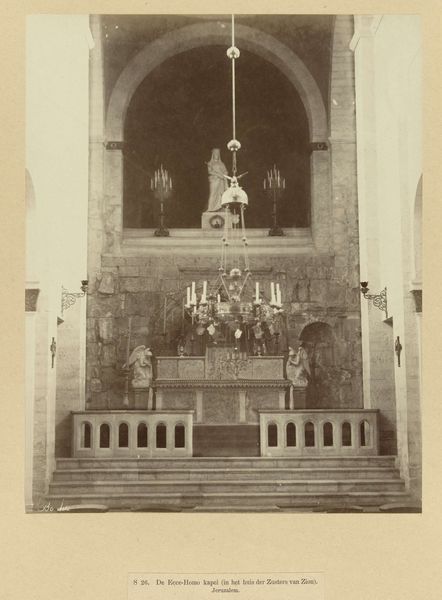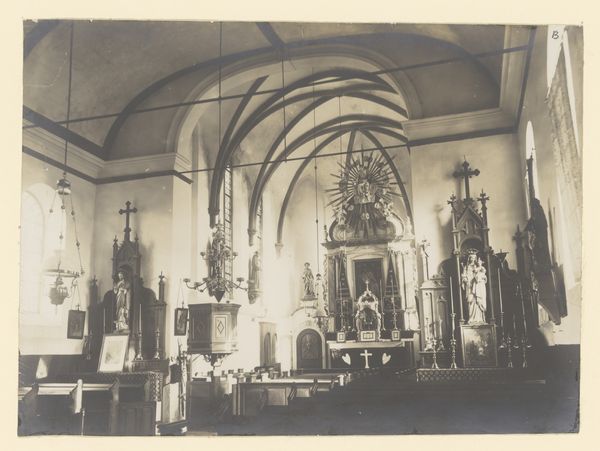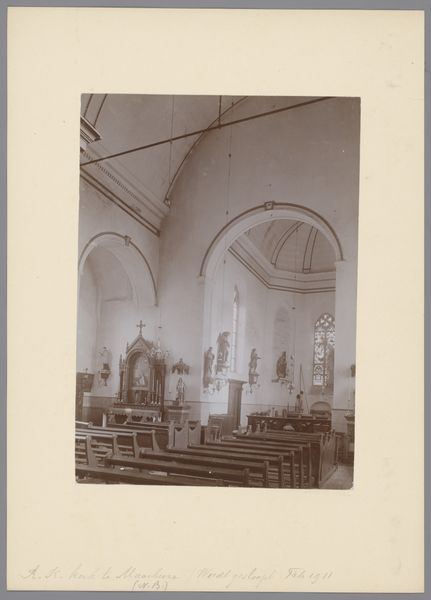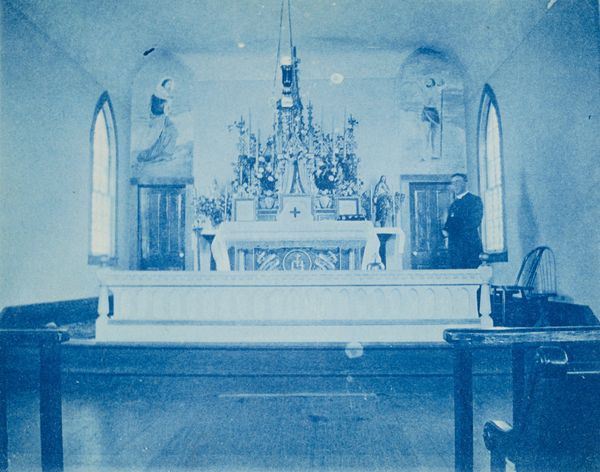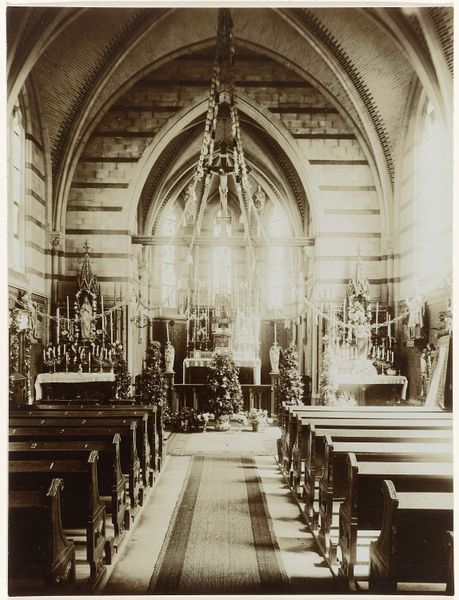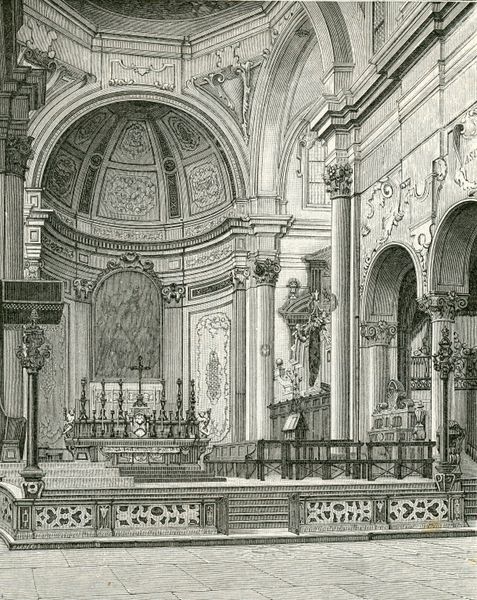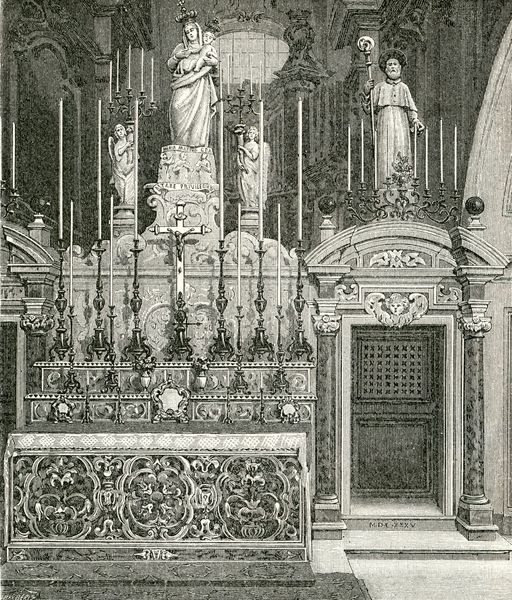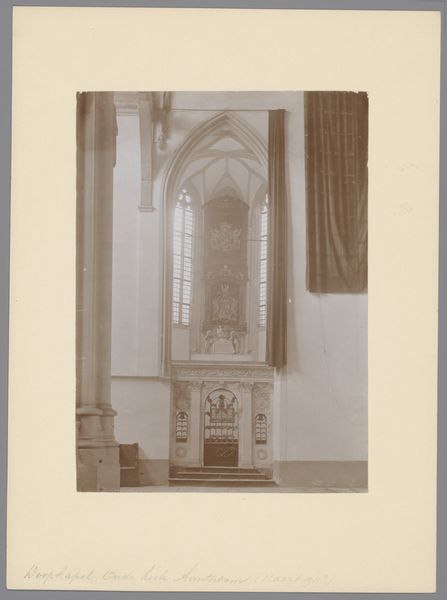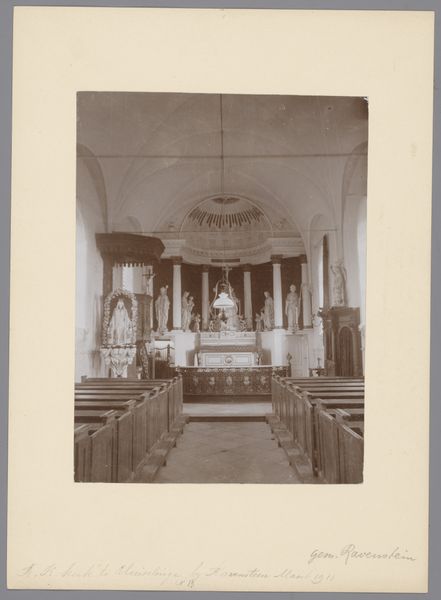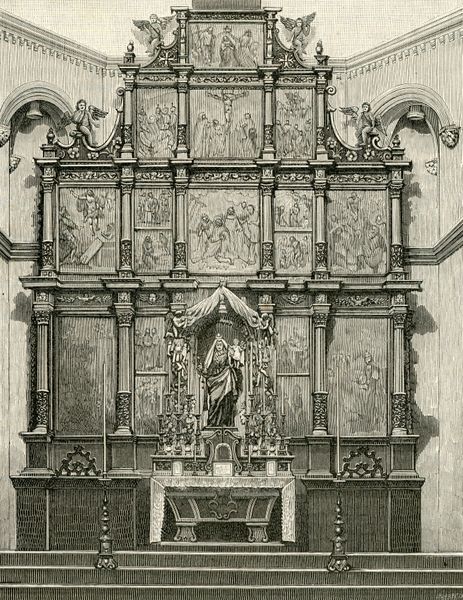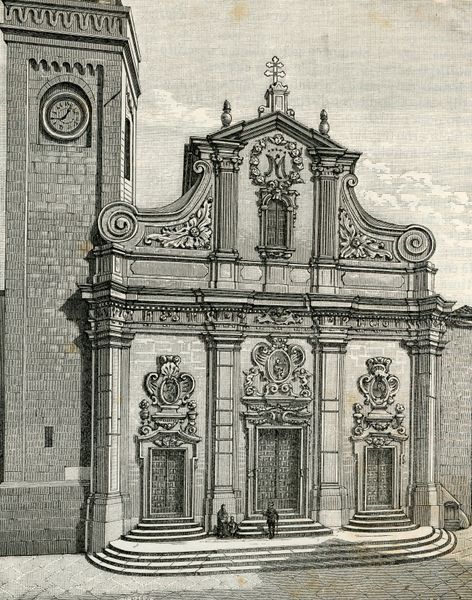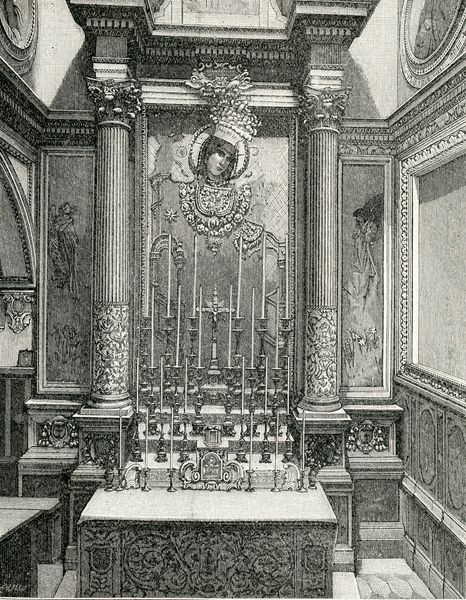
albumen-print, photography, albumen-print, architecture
#
albumen-print
#
cultural heritage
#
historic architecture
#
traditional architecture
#
photography
#
ancient-mediterranean
#
19th century
#
albumen-print
#
architecture
Dimensions: 11 1/8 x 8 3/4 in. (28.26 x 22.23 cm) (image)14 x 11 in. (35.56 x 27.94 cm) (mount)
Copyright: Public Domain
Curator: Looking at this albumen print, titled "Interieur de l'Ecce Homo," taken in the 1870s by Félix Bonfils, currently held at the Minneapolis Institute of Art, what strikes you most? Editor: The sepia tone lends it a somber, almost melancholic air, and the composition seems incredibly structured, with layers directing the eye towards the elevated statue at the back. It's a very powerful visual statement, even before understanding its context. Curator: Absolutely. Bonfils, working in the 19th century, capitalized on the growing interest in documenting the "Holy Land." He was commercially astute, understanding how photographs could shape European perceptions of the Middle East. He aimed to both document and market these sites. What can be interpreted from a contemporary theoretical viewpoint, looking at identity and representation, in this image? Editor: Well, the church itself is a complex layering of power dynamics. Consider how spaces are designed to perform identity. Photography served the purposes of European Christian dominance, as the places linked with religion were becoming colonized. Even details like the positioning of the statue, the way it looms over the space and congregation below, tell a story about constructed authority. And also, the use of photography at the time, it wasn't always very objective. Curator: Precisely, photographs were far from neutral; they actively participated in creating specific narratives. Furthermore, consider Bonfils's role as a European photographer shaping the visual culture of the region. The reception of his imagery among European audiences reinforced ideas about power and "civilization." These visuals carry a significant weight of cultural encoding, as religion in photographs represents European colonizers' domination over the land they see as belonging to them. Editor: Viewing this print through a contemporary lens forces us to consider the historical weight it carries—beyond simply being a record of architecture, it becomes a document that tells the historical influence of those imposing upon spaces in colonized lands. I think considering this imagery through an anti-colonist lens really is very telling of identity and religion at the time, and continues to spark dialogues to this day. Curator: Indeed. Bonfils' work prompts reflection on photography's entanglement with historical narratives, identity, power, and how deeply implicated seemingly straightforward visual depictions can be. It underscores the important intersections of faith, domination, and the history of colonized land and photography itself. Editor: A complex legacy indeed, captured within this albumen print.
Comments
No comments
Be the first to comment and join the conversation on the ultimate creative platform.
